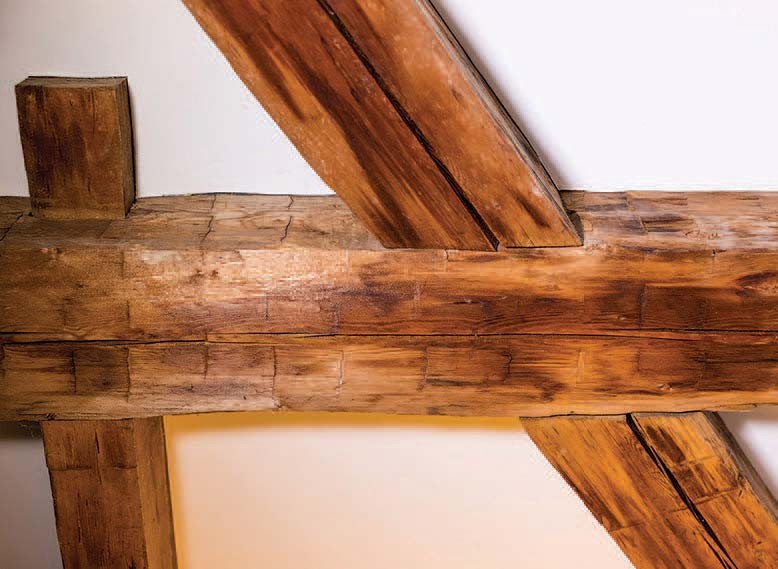We fell hard for the house the first day we saw it. We admired the old apple trees and stone walls, the handmade bricks and hand-hewn beams. At the time, those beams were only visible in one upstairs room. My husband Tig spent the next few years cajoling me not to dig through the plaster to see the rest.
We hoped to do a full house renovation, but went forward with scaled-down plans when our daughter came along. Now, every morning, as I stumble through the upstairs hallway en route to coffee, I see what that work revealed: old-growth pine, charred in places from an early chimney fire, and bearing marks from the builders’ adzes. Some of the beams in our house are 40 feet long. By my crude reckoning, these each hold about 400 pounds of carbon, tucked away from the atmosphere for two centuries and counting.
There’s a sense of rightness when the materials in a building connect in a meaningful way to the landscape around it. There’s satisfaction, too, when you know that the wood that you see and use every day was cut responsibly, with care for the land. I can’t make that claim for the beams in our house, but the first-floor cherry boards came from our own timber harvest 12 years ago. By clearing buggy red pine and other poor quality growth, we set the stage for a shrubby meadow. Later this season, I’ll prop open my office window and hear the bright pleased pleased pleased to meetcha! of chestnut-sided warblers that nest in that habitat.
During this past year, many people have moved to rural areas of the Northeast and, like Tig and me in our early Vermont years, are investing in building projects. Yet many may never consider using regionally sourced wood, or understand how “building local” can support aspects of rural life that they value: open space, wildlife habitat, and vibrant local communities.
Now seems a good time to promote awareness of those connections and, more broadly, to explore how substituting wood for more carbon-costly building materials can contribute to climate change mitigation. This is why Northern Woodlands recently joined with the Massachusetts Woodlands Institute (a subsidiary of the Franklin Land Trust) and the New England Forestry Foundation (NEFF) to promote a free, three-part webinar series, Local Wood: Grow, Build, Live. The first two webinars offer examples of how people have used northeastern timber in furniture making and house building. Recordings for both are available on our website. There’s also a link there for the third entry in the series, Forest to Cities, focused on the use of mass timber (engineered wood products) in large-scale building projects.
I’m looking forward to this third webinar, which takes place on March 17, from 2:00 to 3:30 p.m. No doubt, I’ll be “attending” from home – 18th-century beams above my head, 21st-century boards beneath my feet, and my children’s voices echoing from the next room. How encouraging to imagine a future in which northeastern wood helps reduce society’s dependence on concrete and steel, and where more people recognize value in keeping forests intact for the long-term. It’s a hopeful thought for spring.


